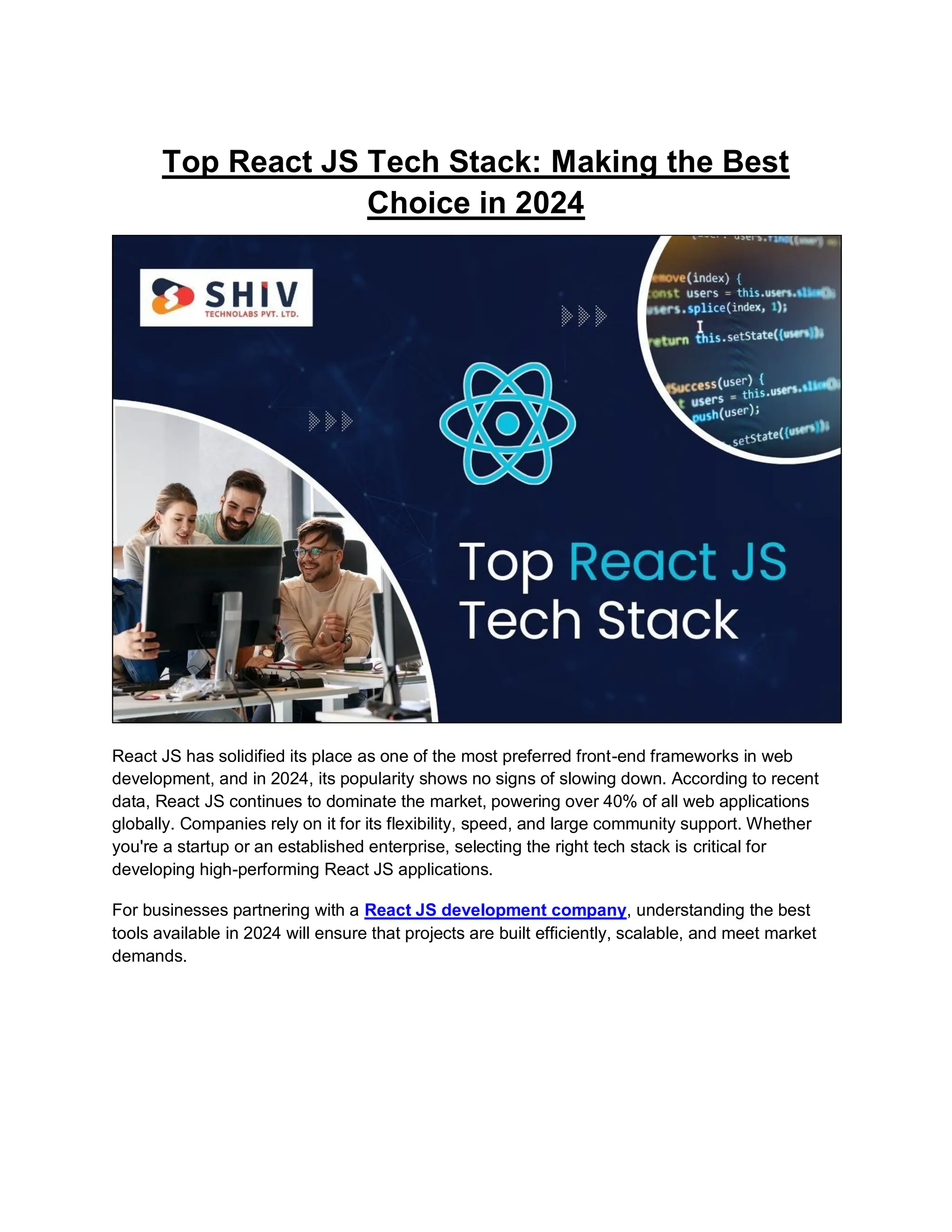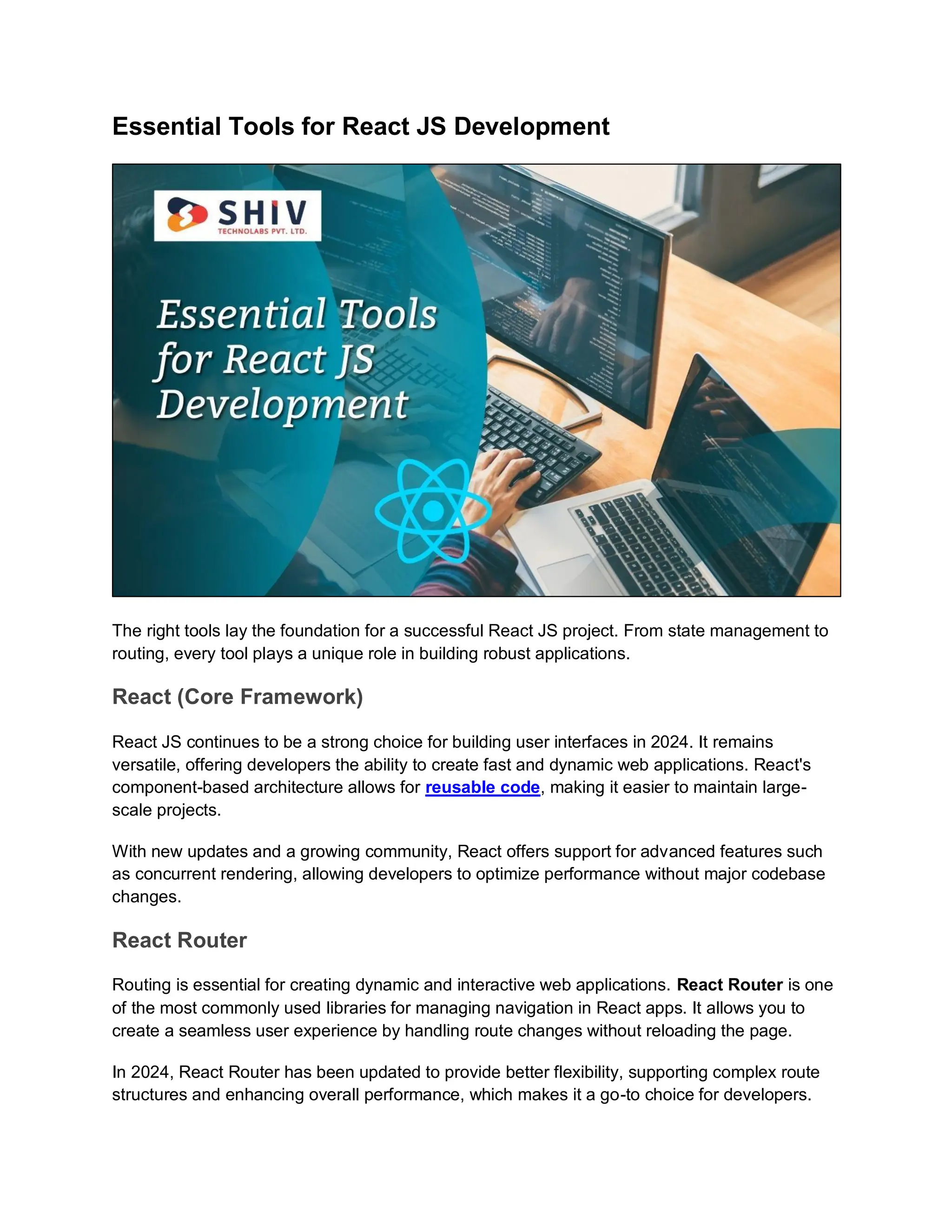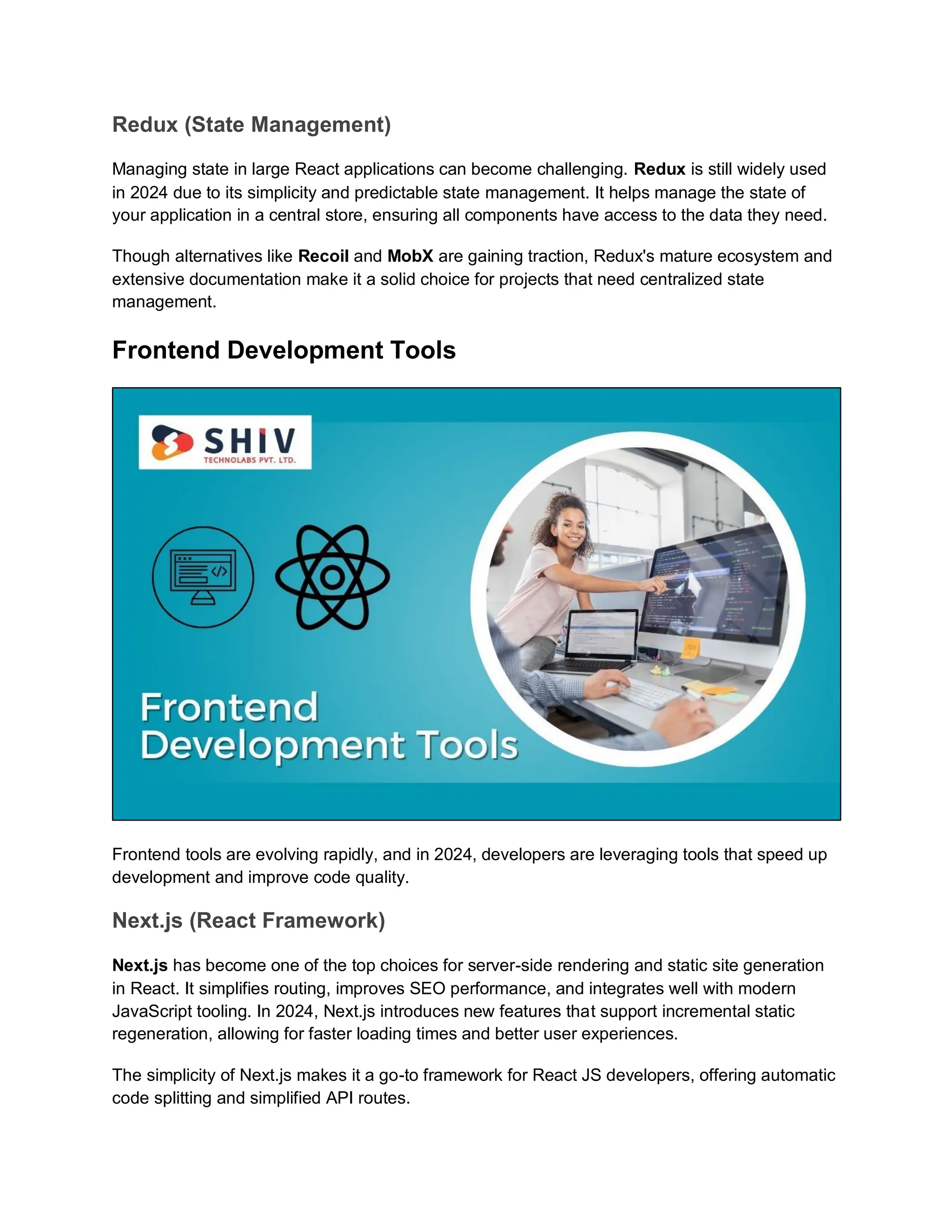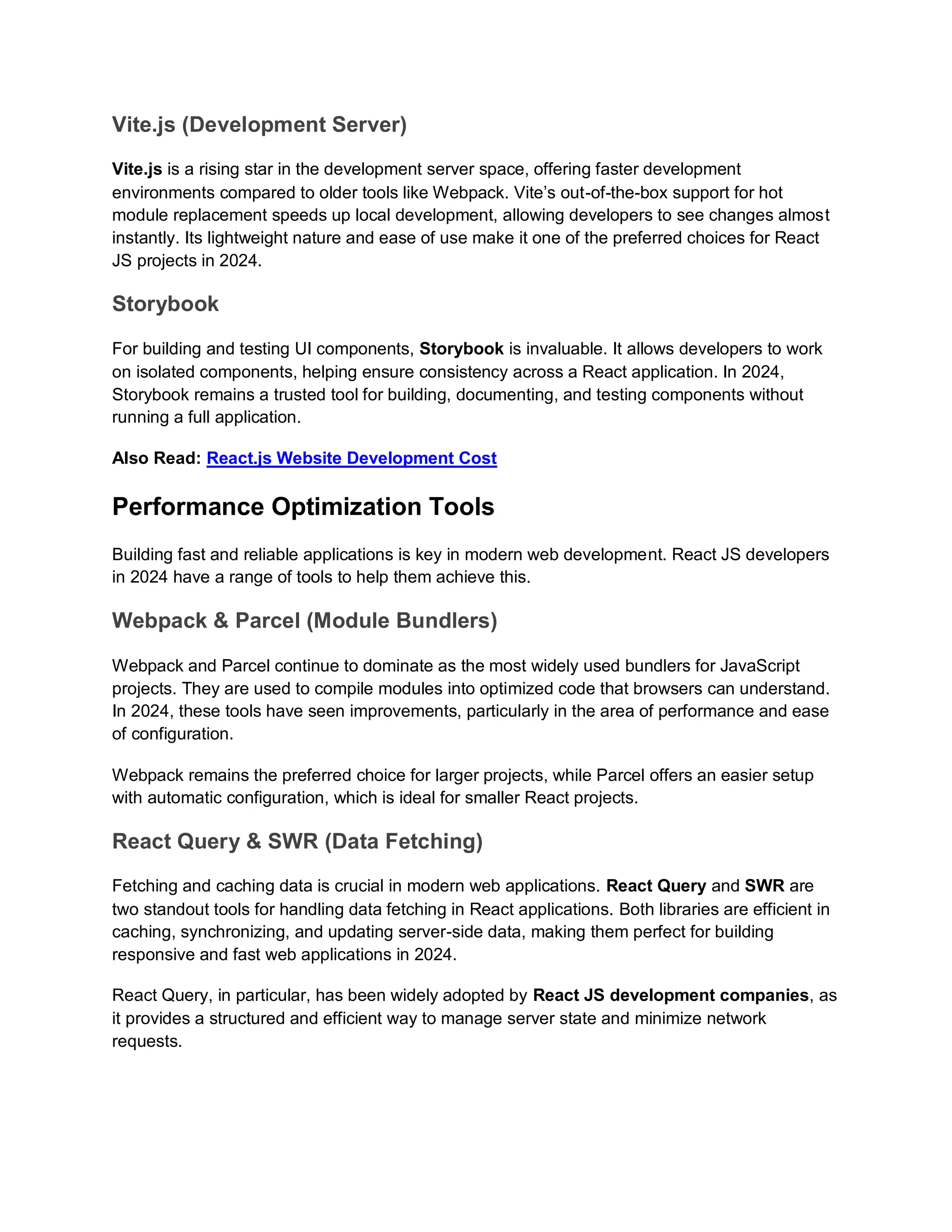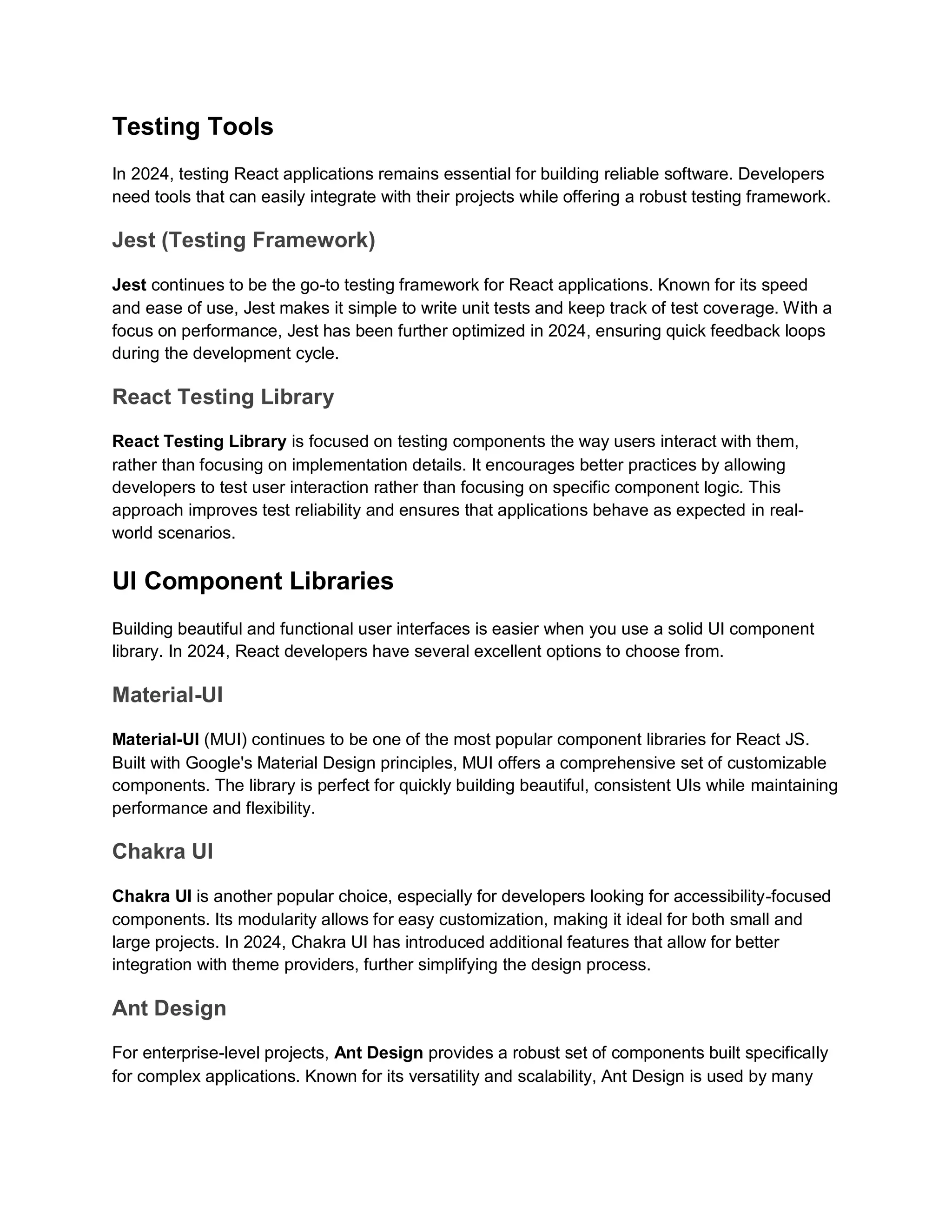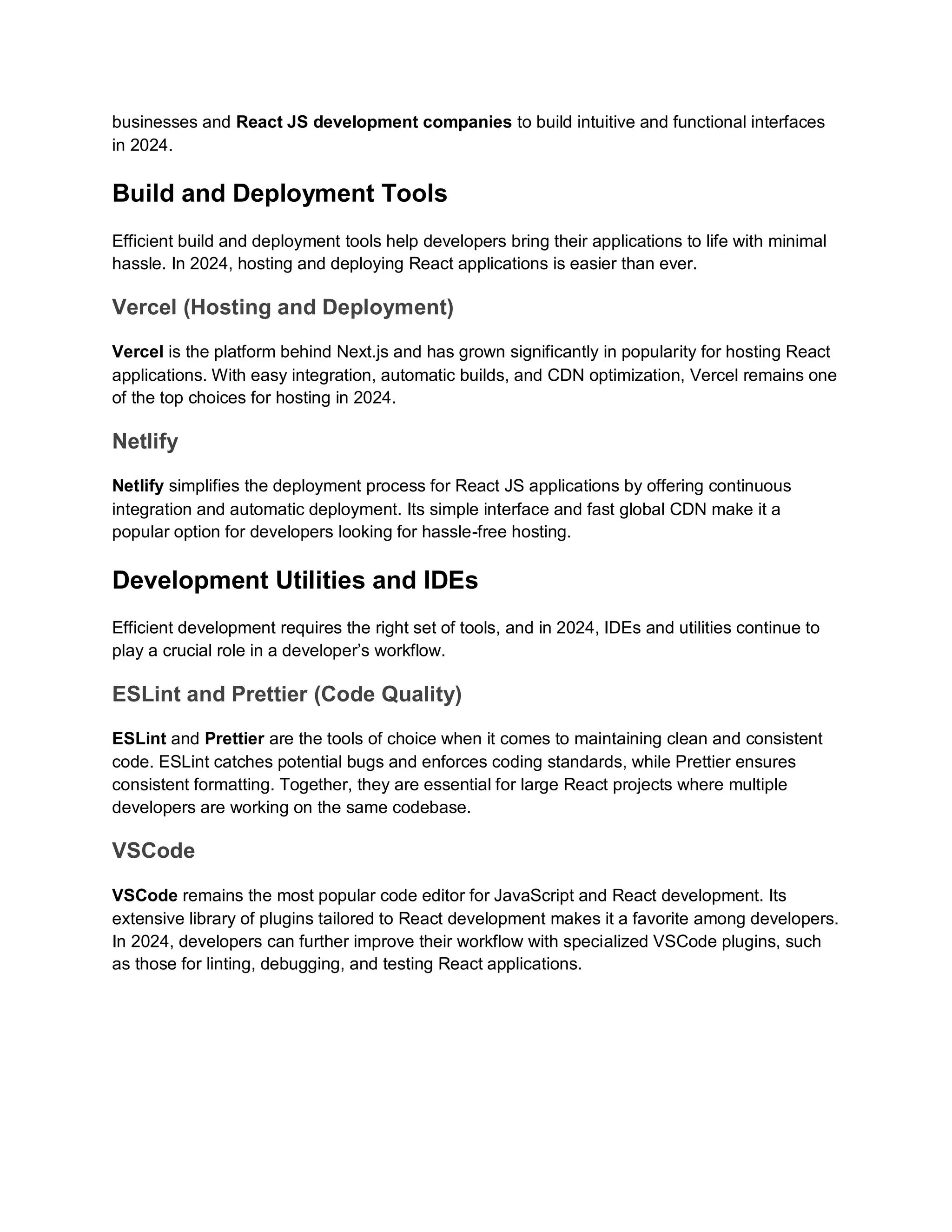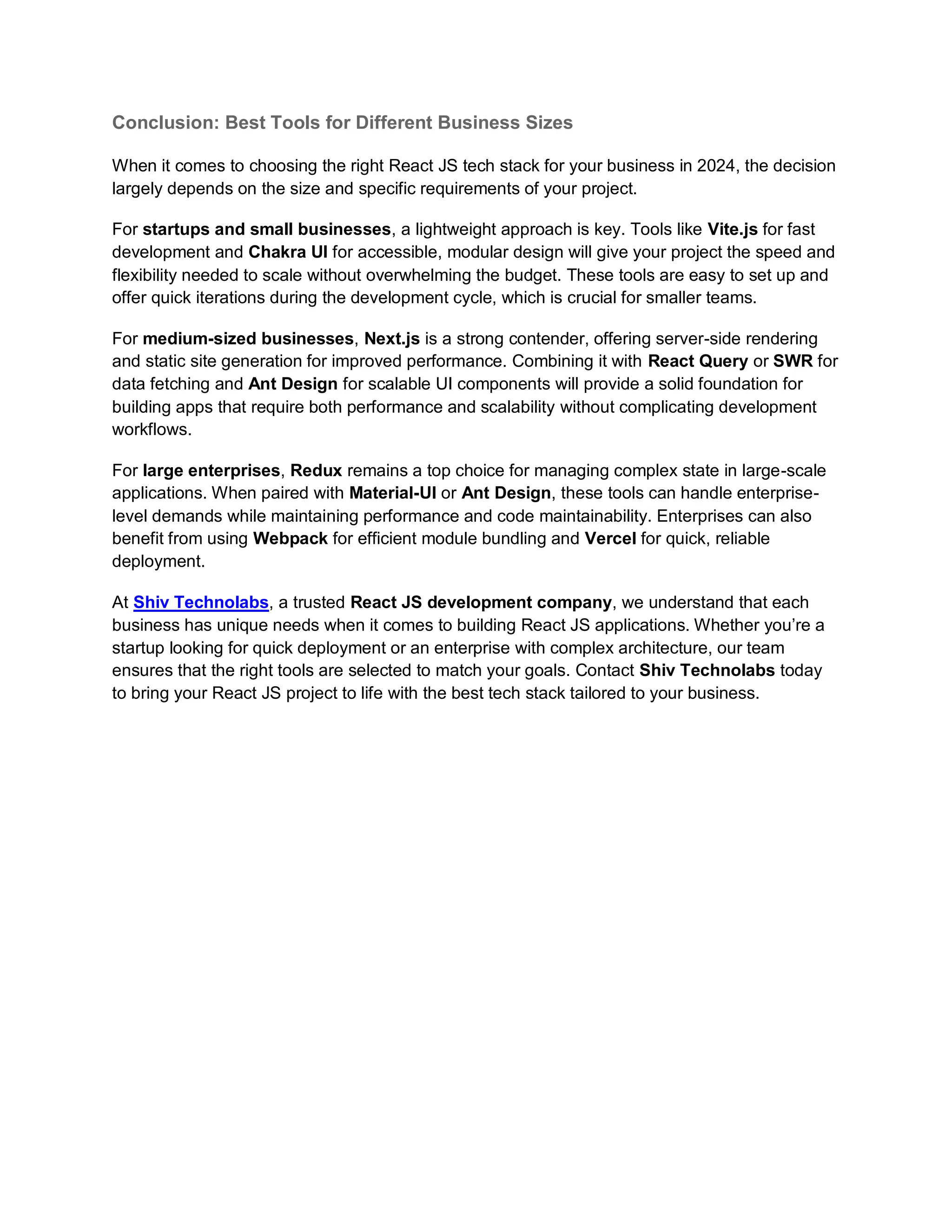In 2024, React JS remains a leading front-end framework, favored for its flexibility and strong community support, powering over 40% of global web applications. Key tools for development include React, React Router, Redux for state management, and frameworks like Next.js and tools like Vite.js for improved performance and efficiency. Different businesses should choose their tech stack based on size and needs, with tailored recommendations provided for startups, medium-sized businesses, and large enterprises.
